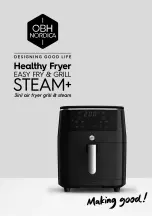
12
sene, stain removers,
turpentine, wax, sub-
stances that remove
wax or other chemi-
cals (e.g. on rags, tea
towels, mops).
•
Have residues of
sprays, hair sprays, ac-
etone or similar prod-
ucts.
•
Garments on which
industrial chemicals
have been used for
washing (for example
dry cleaning).
•
Laundry containing
parts in rubber, foam
rubber or similar.
These can be latex
items, shower caps,
waterproof fabrics,
rubber items, clothing
or items with rubber
parts, cushions with
foam pieces of padding.
•
Padded and damaged
garments (e.g. cush-
ions or jackets). The
protruding padding
material could cause a
fire.
•
Do not introduce wa-
ter dripping laundry.
This dryer develops heat
in the casing during oper-
ation with its heat pump.
It is therefore necessary
to ensure:
•
Constant ventilation
during the entire dry-
ing process.
•
An air gap between the
floor and the under-
side of the dryer that
must not be obstruct-
ed or reduced in size.
Do not spray water on
the dryer. Do not lean
on or make a leverage on
the door, otherwise the
dryer could overturn.
The heating phase is
followed in many pro-
grammes by the cooling
phase so that the gar-
ments/objects are kept at
a temperature that does
not damage them (to re-
duce the risk of self-ig-
nition). Only after this
Summary of Contents for SDR8
Page 2: ......













































